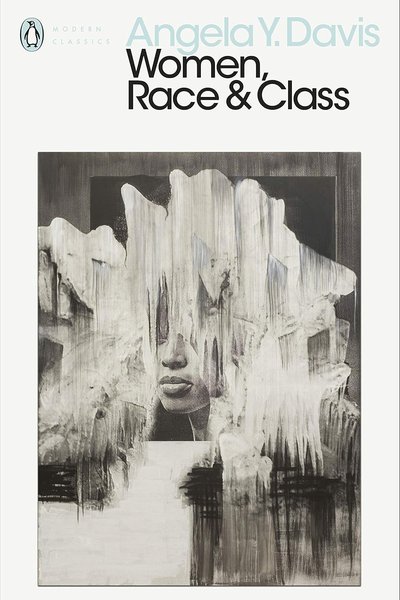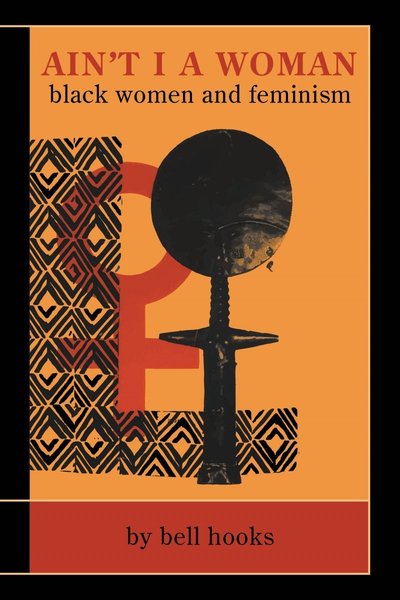Women, Race, & Class
Analyzes the history of the American women's movement from a historical materialist perspective, revealing the interconnections of racial, class, and gender oppression.

📝 Book Review
“Women, Race, & Class” represents a classic work by American political activist and scholar Angela Davis, a groundbreaking text that reexamines the history of the American women’s movement from the dual perspective of Marxist and Black feminist analysis. Through this work, Davis not only challenges traditional feminist historiography’s narrative patterns but provides profound theoretical insights for understanding the complex connections between racial, class, and gender oppression, laying important intellectual foundations for the later development of intersectionality theory and critical race theory.
Davis’s historical analysis is renowned for its depth and critical perspective, particularly her analysis of how the institution of slavery shaped American gender and racial relations. She explores in detail the specific forms of oppression that Black women endured under slavery—oppression that simultaneously embodied the dual characteristics of racism and sexism. Davis points out that Black women under slavery not only had to bear economic exploitation as slaves but also faced sexual exploitation and reproductive exploitation as women. Their bodies were viewed as tools for producing slave labor while they also had to undertake heavy field labor—a unique oppressive experience that neither white women nor Black men had encountered.
The work’s examination of American women’s movement history through intersectional analysis reveals how different forms of oppression operate together rather than separately, creating unique conditions for different groups of women that require specific theoretical and practical responses.
Slavery’s Gender and Racial Dynamics
Davis’s analysis of slavery provides foundation for understanding how racial and gender oppression intersected to create unique forms of exploitation for Black women. Under slavery, Black women’s reproductive capacity was commodified as their children became property of slaveholders, creating a form of reproductive coercion unknown to other groups. This economic exploitation of reproduction reveals how capitalism, racism, and patriarchy operated together to extract maximum value from Black women’s bodies and labor.
The resistance strategies developed by enslaved women demonstrate how oppressed groups create survival mechanisms and challenge power systems even under extreme constraints. Davis documents how Black women’s resistance took forms ranging from work slowdowns to infanticide, revealing agency within conditions of extreme oppression.
The historical analysis demonstrates how slavery created foundational patterns of racialized gender oppression that continued to shape American society long after emancipation, establishing theoretical framework for understanding contemporary inequalities.
Abolition and Women’s Rights: Alliance and Betrayal
When exploring the complex relationship between 19th-century abolition movements and women’s suffrage movements, Davis reveals the deep reasons these two progressive movements ultimately split. She analyzes how early women’s rights activists drew inspiration and strategies from abolition movements but also critically points out how white feminists abandoned principles of racial justice when faced with political choices.
Davis particularly focuses on debates surrounding the Fifteenth Amendment, when many white feminists opposed granting Black men voting rights unless white women simultaneously received this right. This position exposed their acquiescence to and maintenance of racial hierarchical systems, revealing how white women’s feminism often reproduced racial privilege even while challenging gender oppression.
The analysis reveals how political movements can simultaneously advance and constrain liberation depending on their relationship to intersecting systems of power, demonstrating importance of principled solidarity across difference.
This historical examination provides crucial lessons for contemporary coalition building while revealing how single-issue politics can undermine broader liberation movements when they fail to address multiple forms of oppression.
Industrial Working-Class Women’s Marginalization
Davis’s analysis of working-class women’s circumstances during industrialization processes holds equal importance. She extensively researches how these women struggled for survival under terrible working conditions and how their voices and needs were systematically marginalized by middle-class feminist movements.
Davis points out that mainstream feminist movements often ignored class differences, treating middle-class white women’s experiences and needs as common experiences of all women. This approach not only excluded working-class women but also ignored the special challenges they faced and their efforts to improve their circumstances.
The class analysis reveals how feminism’s focus on professional advancement and individual rights often failed to address structural economic problems facing working-class women, including dangerous working conditions, inadequate wages, and lack of social support systems.
The examination of labor organizing among working-class women demonstrates alternative feminist practices focused on collective action and economic justice rather than individual advancement within existing systems.
Theoretical Contributions to Intersectional Analysis
Davis’s theoretical contributions have far-reaching influence. Although she didn’t use the term “intersectionality” that would later be widely adopted, she systematically analyzed how race, class, and gender interact and reinforce each other, jointly shaping different women’s groups’ life experiences. This analytical approach opened new perspectives for understanding multiple oppressions, providing important intellectual foundations for Kimberlé Crenshaw’s later intersectionality theory.
Davis’s work proved limitations of single-identity politics, demonstrating that only through considering multiple identities’ intersecting influences can we truly understand different groups’ complex circumstances. Her framework reveals how systems of oppression operate through their intersections rather than as separate, additive forms of discrimination.
The intersectional approach developed through historical analysis provides tools for understanding how different groups experience liberation movements differently based on their positioning within multiple systems of power.
Critique of Racist Feminism
Davis’s critique of racist feminism represents one of the book’s sharpest sections. She mercilessly exposes racist tendencies existing within early women’s suffrage movements—tendencies manifested not only in political strategy choices but also in the movement’s ideological construction. She critiques the tendency to universalize white middle-class women’s experiences, pointing out that this approach actually perpetuates racial and class privilege.
More importantly, Davis deeply analyzes the dangerous alliance between eugenics movements and feminism, revealing how certain feminists used eugenic theories to justify their social positions while depicting women of color and working-class women as “unfit” mothers. This analysis exposes how women’s liberation movements can simultaneously advance some women’s interests while reinforcing oppression of others.
The critique reveals how feminist movements must actively oppose racism within their own ranks rather than simply advocating for gender equality, demonstrating that authentic feminism requires commitment to liberation for all women.
Class Analysis as Central Framework
Class analysis occupies a central position in Davis’s theoretical framework. She emphasizes that gender and racial oppression cannot be understood apart from class analysis, arguing that the capitalist system is a key factor maintaining these oppressive systems. Davis’s Marxist feminist stance enables her to deeply analyze relationships between economic structures and social oppression.
She points out that racism and sexism are not merely products of cultural prejudice but necessary components of capitalist economic systems. This analysis provides important tools for understanding oppression’s systematic characteristics while pointing toward directions for fundamental social transformation.
The class framework reveals how economic systems create material foundations for racial and gender oppression while demonstrating how liberation requires transformation of economic structures rather than simply addressing cultural attitudes.
Birth Control Movement’s Dual Nature
Davis’s analysis of the birth control movement’s dual nature reveals how this movement produced completely different impacts for women of different races and classes. For white middle-class women, birth control meant more autonomy and choice, but for women of color, it often meant forced sterilization and deprivation of reproductive rights.
This analysis demonstrates how seemingly progressive social movements can produce different political effects in different social contexts, revealing importance of analyzing how universal policies affect differently positioned groups.
The reproductive rights analysis connects to broader questions about bodily autonomy while revealing how reproductive control serves broader systems of racial and economic oppression.
Political Economy of Domestic Labor
Davis’s exploration of domestic labor’s political economy holds equally groundbreaking significance. She deeply analyzes domestic labor’s economic value and social significance, challenging traditional notions that view domestic labor as “natural” women’s work. Davis proposes possibilities for socializing domestic labor, arguing that only through changing domestic labor’s organizational methods can women be truly liberated.
This analysis not only enriches Marxist economic theory but also provides new directions for feminist political practice, connecting household labor to broader questions about work, value, and social organization.
The domestic labor analysis reveals how unpaid reproductive work subsidizes capitalist accumulation while demonstrating how reorganizing reproductive labor could serve liberatory goals.
Racialization of Rape Myths
In analyzing the racialization process of rape myths, Davis demonstrates her profound understanding of racism and sexism’s mutual intersection. She critically analyzes how rape accusations were used to maintain racial hierarchical systems, particularly how lynching violence against Black men utilized rhetoric of protecting white women to mask its racist essence.
Simultaneously, Davis reveals how these myths ignored the reality of Black women experiencing sexual violence, demonstrating how racism and patriarchy work together to maintain existing power structures. The analysis exposes how sexual violence serves political functions in maintaining racial hierarchies while obscuring Black women’s experiences of sexual assault.
The rape myth analysis reveals how gender-based violence operates within racial frameworks while demonstrating how anti-violence organizing must address both racism and sexism simultaneously.
Contemporary Impact and Continuing Relevance
Davis’s work has profound and lasting contemporary impact. Her work laid important foundations for critical race theory and intersectional feminism development, providing subsequent scholars with theoretical tools and methodological guidance for analyzing multiple oppressions. Her analysis deeply influenced contemporary prison abolition movements, providing important perspectives for understanding racism and sexism in criminal justice systems.
Her work also inspired feminist movements in the Global South, providing important references for understanding relationships between colonialism, racism, and gender oppression. The theoretical frameworks developed through historical analysis remain relevant for contemporary struggles while providing tools for understanding how oppression adapts to changing conditions.
Understanding Contemporary Racial Justice Movements
For understanding contemporary racial justice movements, Davis’s analysis proves crucial. Her work helps us understand historical roots and theoretical foundations of movements like Black Lives Matter, also providing important tools for analyzing contemporary racial inequality’s complex manifestations.
Her analysis of systematic oppression helps us understand why simple legal reforms often cannot solve deep structural problems and why more fundamental social transformation is needed. The framework reveals how reform efforts can be co-opted to maintain existing systems while appearing to address inequality.
The movement analysis provides guidance for building coalitions that address multiple forms of oppression while maintaining focus on structural transformation rather than individual advancement.
Educational and Organizing Applications
“Women, Race, & Class” serves as essential educational tool for understanding how different liberation movements can either reinforce or challenge existing power structures depending on their analysis and practice. The historical examination provides lessons for contemporary organizing while revealing how movements must actively work to include rather than marginalize the most oppressed.
The work’s combination of historical analysis and theoretical development makes it valuable for both academic study and practical organizing, providing frameworks for analyzing how different strategies serve different political ends.
Legacy for Contemporary Feminism
Against the background of contemporary racial justice movement resurgence and new feminist movement developments, Davis’s analysis provides important tools for understanding systematic oppression’s complexity. Her work reminds us that genuine liberation must be comprehensive liberation—we cannot focus only on single forms of oppression while ignoring other forms of inequality.
The legacy challenges contemporary movements to maintain intersectional analysis while building coalitions that address root causes rather than symptoms of oppression. The framework remains relevant for understanding how global capitalism, racism, and patriarchy continue to evolve and intersect.
Methodological Contributions
Davis’s methodological approach demonstrates how historical analysis can serve contemporary political purposes while maintaining scholarly rigor. Her integration of Marxist economic analysis with attention to racial and gender dynamics provides model for engaged scholarship that serves liberation movements.
The methodological innovations include attention to agency within oppression, analysis of how resistance strategies develop under different conditions, and examination of how liberation movements can both challenge and reproduce existing power relations.
Conclusion: Foundations for Transformative Politics
“Women, Race, & Class” represents not only an important historical work but a continuously effective analytical framework helping us understand and respond to various challenges contemporary society faces. Davis’s legacy reminds us that social justice causes need not only good intentions but profound analysis, systematic thinking, and sustained action.
The work demonstrates how historical understanding can inform contemporary struggles while providing theoretical foundations for imagining and creating alternatives to existing systems of oppression. By revealing how liberation movements can both advance and constrain freedom depending on their relationship to intersecting systems of power, Davis provides guidance for building more inclusive and transformative political practice.
Her analysis continues to inspire scholars, activists, and educators working toward comprehensive social transformation that addresses multiple forms of oppression simultaneously. “Women, Race, & Class” remains essential reading for anyone seeking to understand how racial, gender, and class oppression intersect while learning how to build movements capable of creating genuine alternatives based on justice, equality, and collective liberation for all people.
The enduring significance of Davis’s work lies in its demonstration that liberation requires both rigorous analysis of existing conditions and unwavering commitment to transformation that serves the most oppressed rather than simply expanding opportunities for the already privileged. Through its combination of historical insight, theoretical sophistication, and political commitment, the work continues to provide roadmap for understanding how individual and collective struggles connect to broader systems of domination while pointing toward possibilities for comprehensive social transformation.
Discussion
读书讨论
分享您对这本书的感想和看法,与其他读者交流见解
加入讨论
分享您对这本书的感想和看法,与其他读者交流见解
加载评论中...
Book Info
Related Topics
🛒 Get This Book
 Buy on Amazon
Buy on Amazon Related Books
读书讨论
分享您对这本书的感想和看法,与其他读者交流见解
加入讨论
分享您对这本书的感想和看法,与其他读者交流见解
加载评论中...

